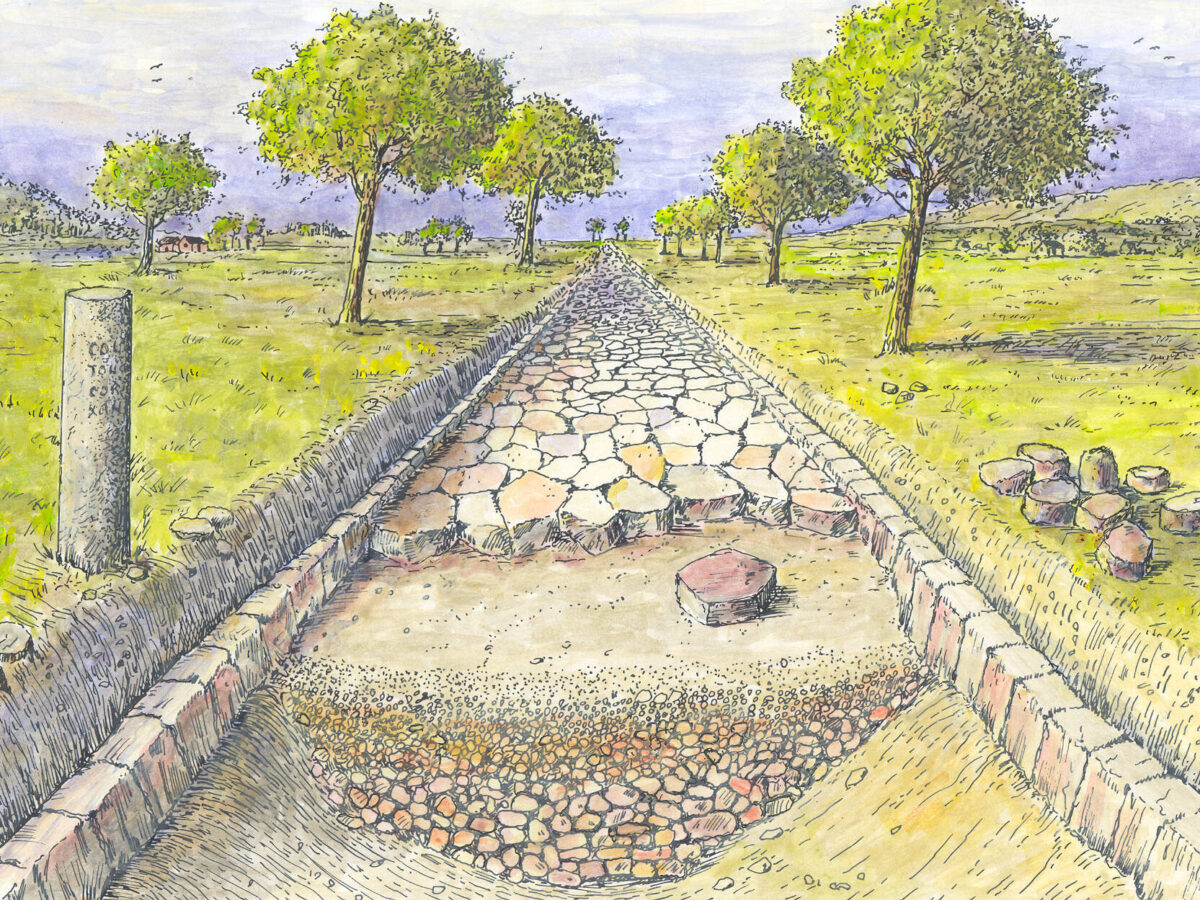Villa Meezenbroek – Famous for One Day in 1950 Thanks to an April Fool’s Joke
Author: Harry Lindelauf
Photography: Londen Museum
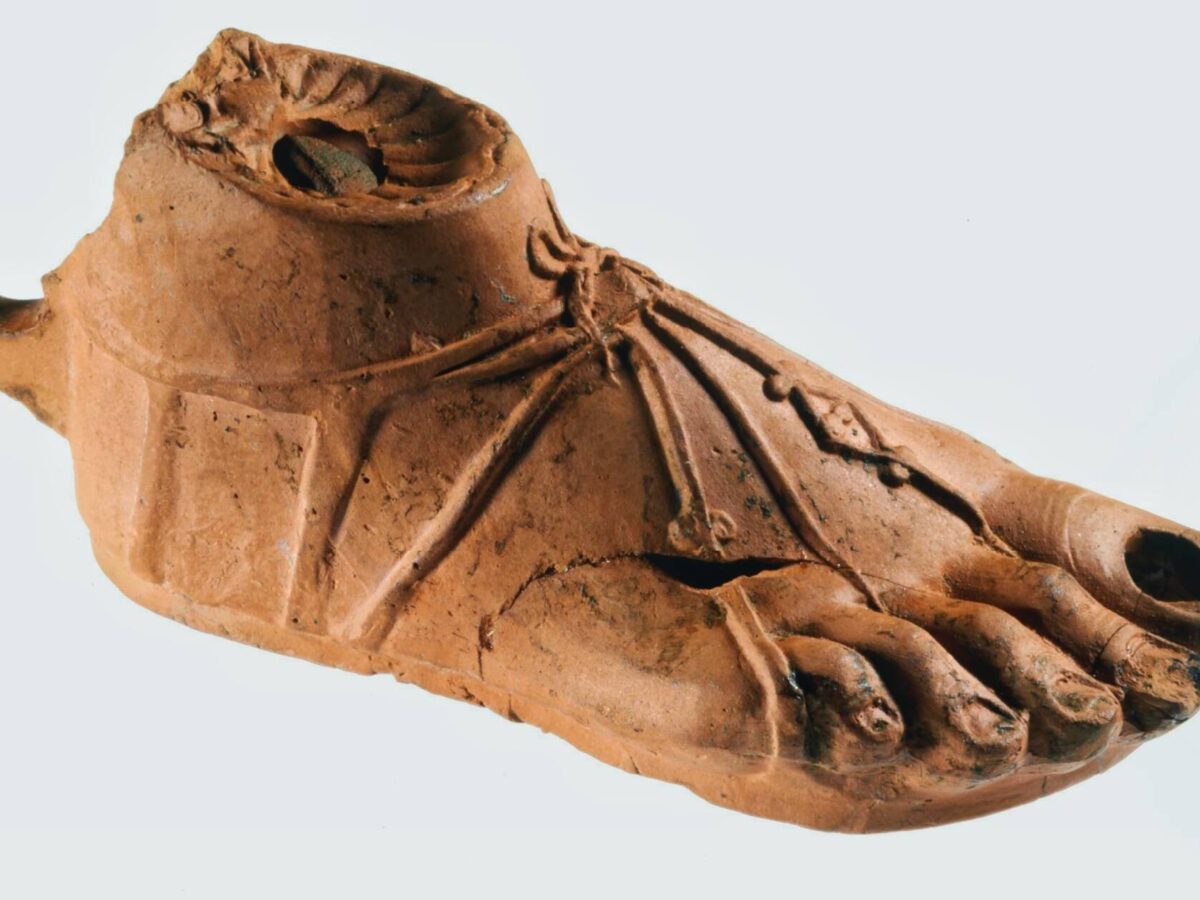
In the series of articles about lesser-known Roman villas in South Limburg, this time we turn to a villa that was famous for just one day: Villa Meezenbroek in Heerlen. On that day, not coincidentally April 1, 1950, the Roman villa was promoted by the Limburgsch Dagblad to the “largest Roman mining headquarters of the continent.”
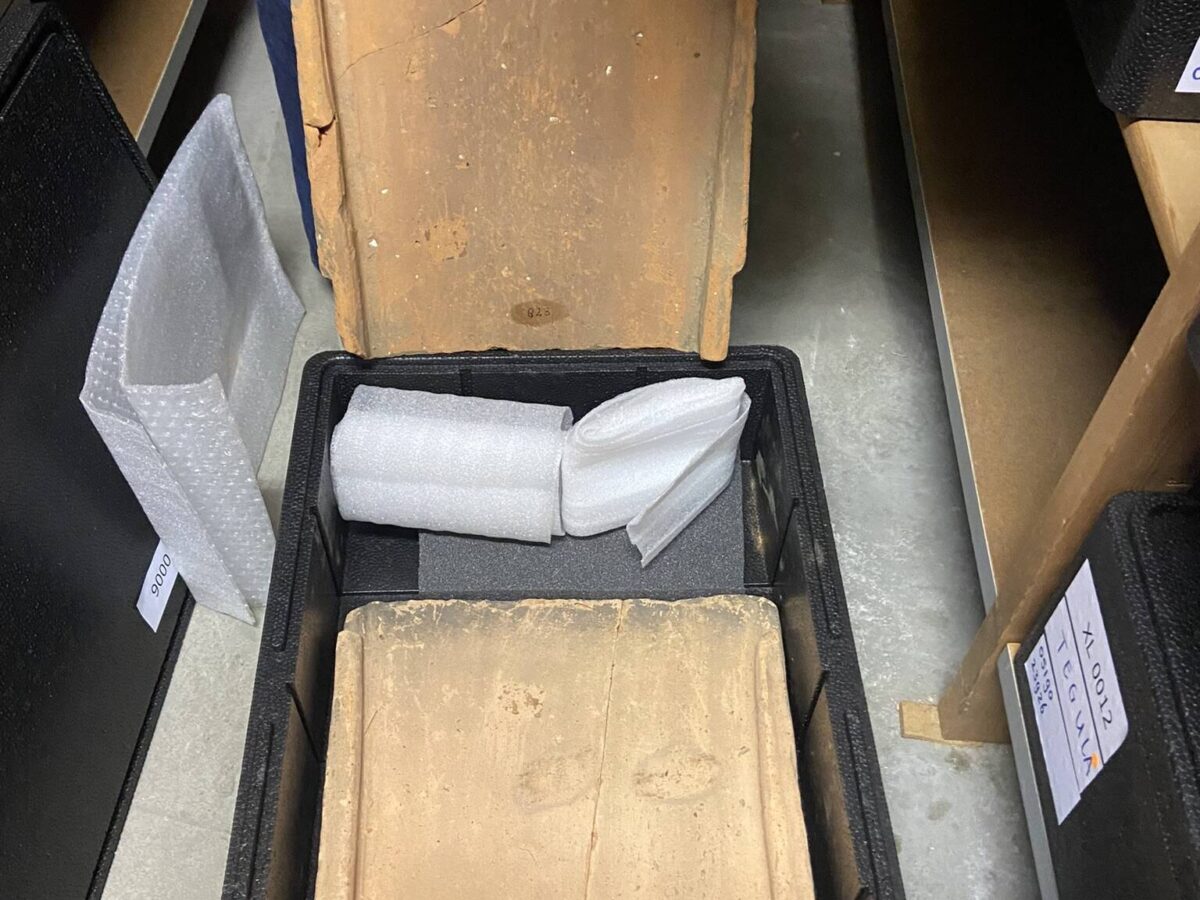
By April 2, the excitement was already over. What remained was an interesting collection of finds, thanks to both small and larger excavations between 1921 and 1950. Roman presence in Meezenbroek was first revealed in 1921. While building the new workers’ district of Meezenbroek for miners, construction workers found masonry foundations during digging for houses and sewers. In 1922 and 1933, further building again led to new finds, including roof tiles, terracotta pipes, and a Roman coin.
Photo: Found in Meezenbroek – intact roof tiles with the producer’s stamp CTEC. Tiles with this stamp have also been found at the Roman bathhouse in Heerlen and in Voerendaal, Eijsden, Tongeren, Echt, and Cuijk. The factory may have been located in Heerlen or its immediate surroundings.
April Fool’s joke: Headquarters of Roman mining
Not a Roman villa at all – the remains in Meezenbroek, so the Limburgsch Dagblad reported, clearly proved that the Societas Carbonis Imperialis was located here: the largest Roman mining company in Europe, according to the newspaper, quoting a fictitious archaeologist from The Hague. The article even claimed that coal had been found among the Roman remains, as well as a bronze statue of Proconsul Hortus Magnus.
Anyone who joined in the editorial excitement was fooled that Saturday in 1950 by a classic April Fool’s joke. Every reference to contemporary coal mining was fabricated. But the extensive foundations of a Roman villa that had been unearthed only weeks earlier were real.
Why build in such a marshy area?
The Meezenbroek district lies low compared to its surroundings. The ground is marshy, with the Caumerbeek and Palembergerbeek streams flowing nearby. The Romans nevertheless built here and consequently struggled with water. Excavations revealed filled-in cellars and flooded hypocaust channels, clogged with mud.
The obvious question arises: why build here at all? The wet soil is only suitable as pasture, so it could not be used for growing grain. The Romans surely realized this – they were usually clever in choosing locations for their farmsteads.
So building in this watery area was not a mistake in planning. It seems that the Romans deliberately sought water. If so – something further research must confirm – the reason is obvious: they needed water. Perhaps for a watermill to grind grain? Unfortunately, no direct evidence was found during the excavations.
Photo: Excavation scene in 1950.
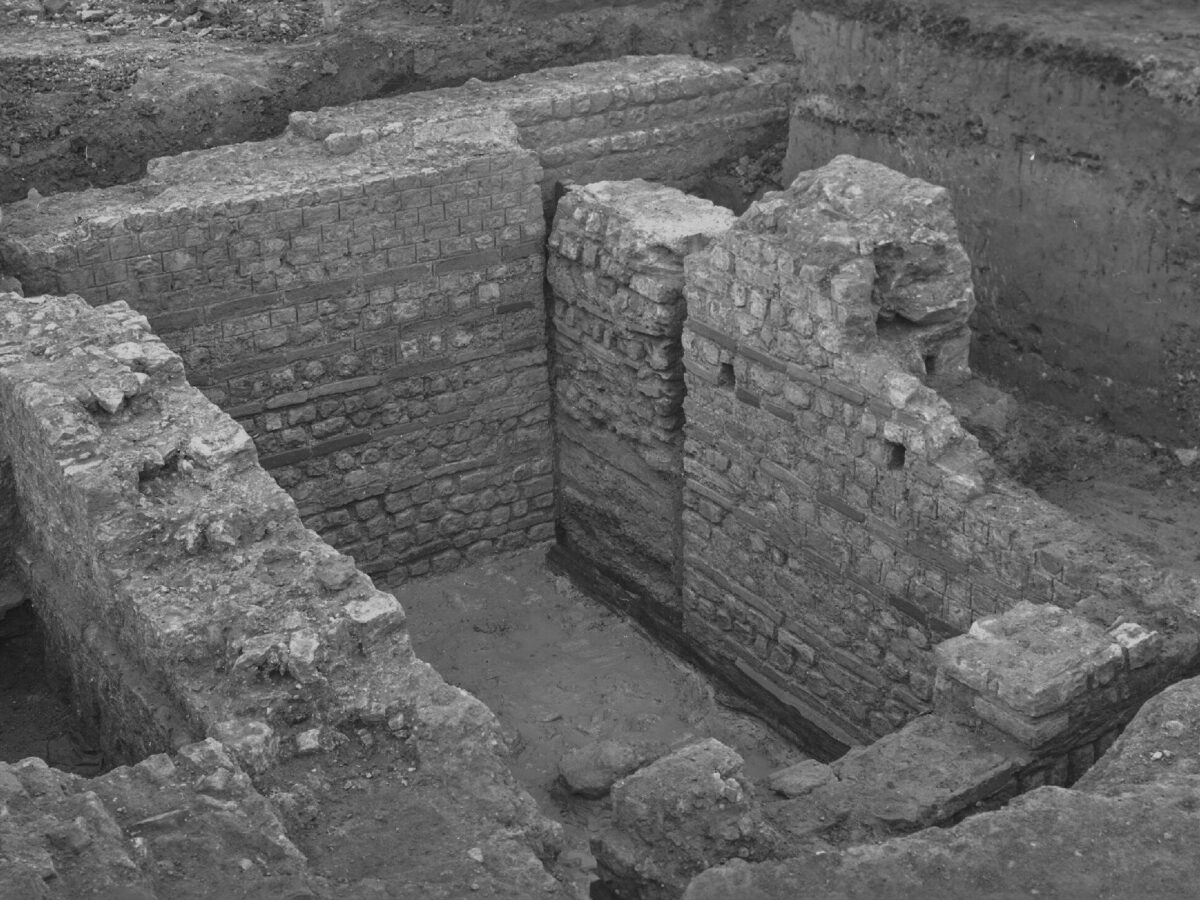
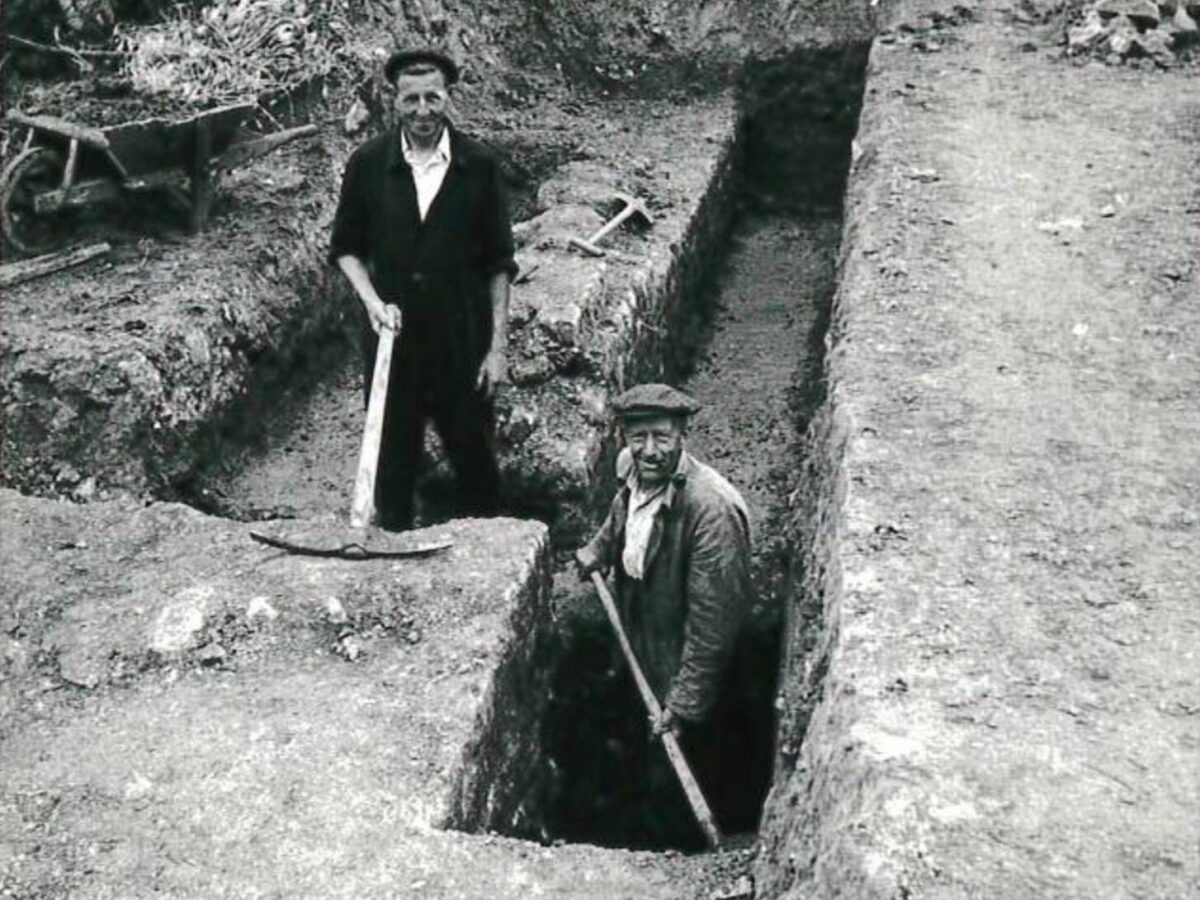
Special find: An oil lamp in the shape of a foot
Nevertheless, interesting objects were unearthed. Already in 1921, archaeologists discovered the foundations of a 40-meter-long building, plastered walls with red panels and green, yellow, and gray-black borders, fragments of frescoes, and masonry hypocaust channels.
A year later came another success: 150 meters away, a building measuring 20 by 16 meters with six rooms was discovered. In 1933, 25 meters further, a Roman wall about 50 cm thick was unearthed.
Photo: Excavation scene in 1950.
In 1950, further digging was required for the construction of a gasholder. At that point, the entire building from 1921 was excavated: it turned out to be a main building with a covered gallery. A masonry limestone water channel was also uncovered, leading to a pond that once lay east of the main building.
Besides the foundations, archaeologists in Meezenbroek found a wealth of material: roof tiles (intact or broken, some stamped CTEC – meaning unknown), pottery, nails, terracotta pipes, part of a bronze mirror, a coin of Vespasian, column capitals, fragments of wall paintings, oyster shells, charcoal, oak beams – and most remarkable of all, an oil lamp shaped like a sandaled foot.
Photo: In London, during excavations for Southwark Underground station, an oil lamp shaped like a foot was found, closely resembling the one from Meezenbroek. A similar piece was also discovered in Woerden. (Photo: London Museum)

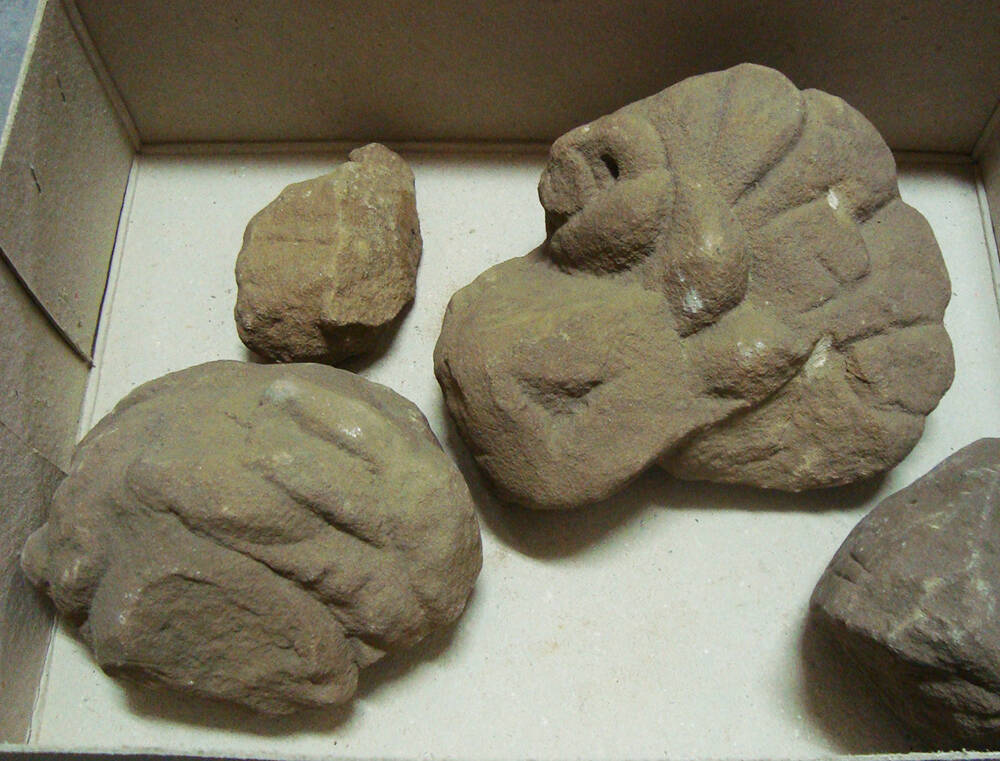
Prominent on the radar
All Roman foundations were reburied after excavation. In 2024, archaeologist Diederik Habermehl of VU Amsterdam compiled an overview of all Roman villas found so far in Parkstad (Fertile Soils. Roman Villas in Parkstad). Villa Meezenbroek features prominently: “It is a well-excavated villa with finds such as building material and wall paintings. No definitive study has ever been published. Meezenbroek is therefore an important discovery, certainly worthy of further study of its architecture, layout, and decoration.”
Photo: Fragments of capitals from the columns of the main building.
This series on lesser-known Roman villas ties in with the exhibition Roman Villas in Limburg at De Vondst on Raadhuisplein in Heerlen. It is the first exhibition of the new Roman Museum, successor to the Thermenmuseum.
Earlier in this series: Golf on the grass, with Roman history beneath.

